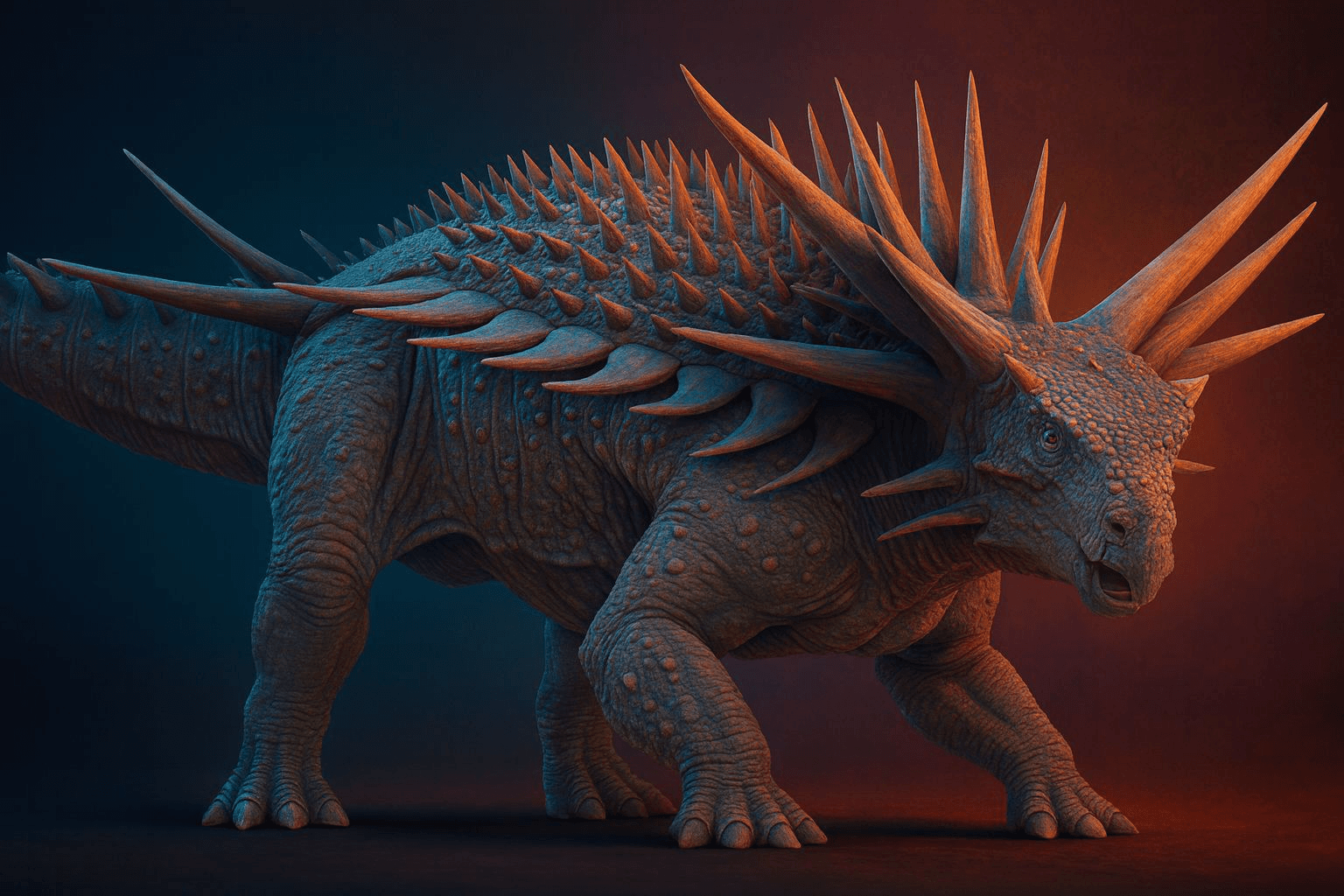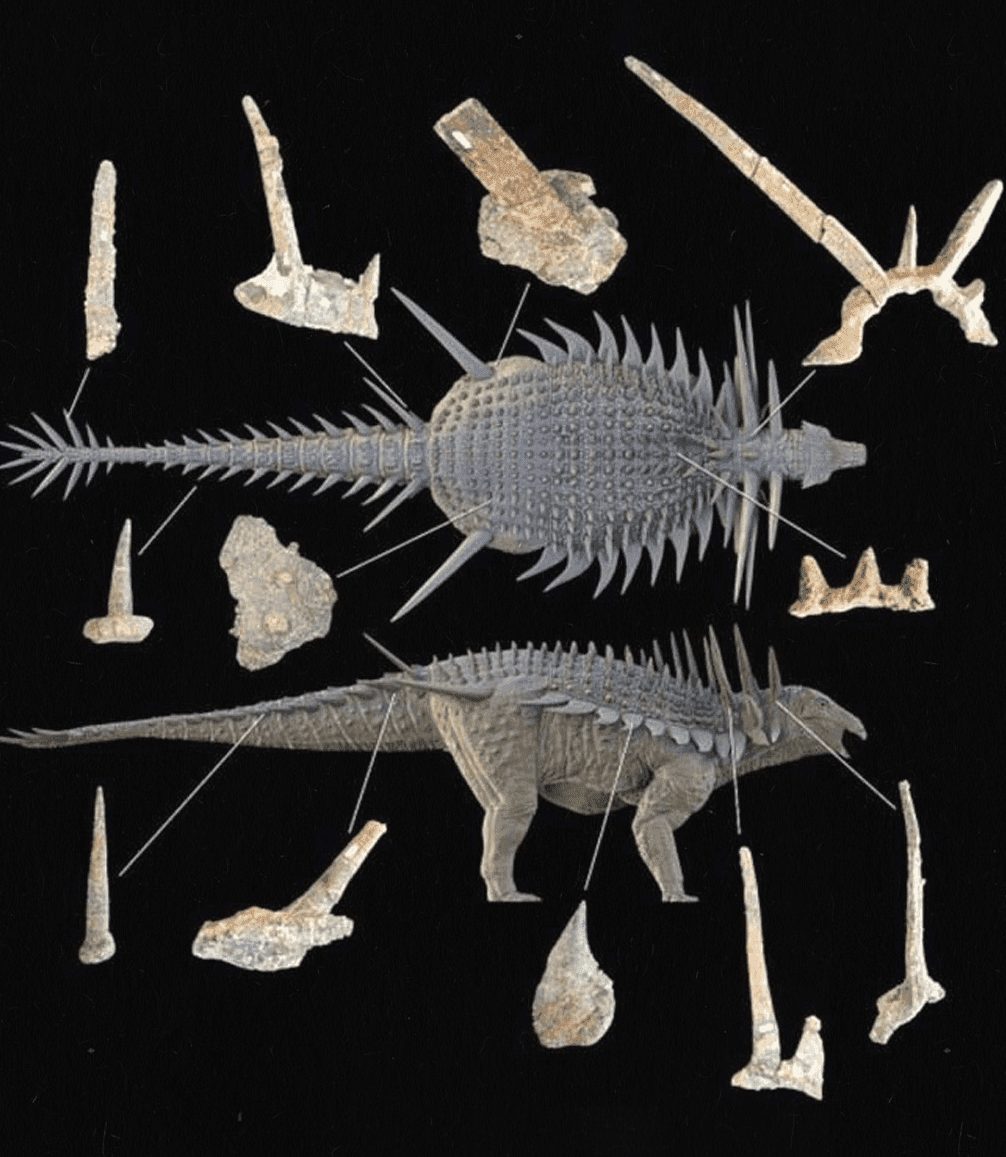How Nature's "Punk Rock" Dinosaur Challenges Our Views on Adaptation
Sara Srifi
Tue Sep 02 2025

Discover how the ‘punk rock’ dinosaur Spicomellus afer, with its metre-long spikes, challenges traditional views of evolution and adaptation. Explore what this prehistoric marvel can teach us about specialization, flexibility, and survival, lessons that resonate for business, technology, and life today.
Scientists discover an armoured dinosaur with metre-long spikes sticking out from its neck in Morocco. The species, called Spicomellus afer, lived 165 million years ago, and is the oldest example of a group of armoured dinosaurs called ankylosaurs. The latest discovery tells a fresh tale of evolution of these armoured dinosaurs.

When scientists first laid eyes on the fossilised remains of what they would later call Spicomellus afer, they were staring at something that would shake the foundations of how we understand evolutionary armor. Here was a creature that looked like it had walked straight out of a heavy metal album cover, bristling with meter-long spikes jutting from its neck like some prehistoric punk rocker's collar.
But this discovery from the ancient landscapes of Morocco tells us far more than just another fascinating tale from deep time. It's a masterclass in the dangers of assuming we know how evolution works, and it carries profound lessons for anyone navigating change in business, technology, or life itself.
Meet the Ultimate Armored Rebel
Picture this: 165 million years ago, across the lush wetlands that would one day become the Atlas Mountains of Morocco, a four-meter-long, two-ton herbivore was making quite the statement. Spicomellus afer wore spikes not just along its body and on its clubbed tail, but in elaborate rings of huge spikes around its neck and hips, earning it the nickname "punk rocker" from Professor Richard Butler of the University of Birmingham.
What makes this discovery truly revolutionary isn't just its outrageous appearance. This elaborate armour might have been used for display, challenging the current theory of why ankylosaurs evolved their extensive body armour. In other words, everything we thought we knew about why these creatures developed their defenses might be completely backwards.
The Great Evolutionary Plot Twist

Here's where the story gets really interesting from an adaptation perspective. Scientists had long believed that armored dinosaurs started simple and gradually developed more sophisticated defenses in response to increasingly dangerous predators. It made perfect sense: as meat-eaters got bigger and nastier (hello, T. Rex), plant-eaters needed better protection.
But Spicomellus just smashed that theory to pieces. The world's most unusual... Nature reports that Spicomellus afer had a tail weapon more than 30 million years before any other ankylosaur, as well as a unique bony collar ringed with metre-long spikes. This creature was sporting elaborate armor when the big predators hadn't even evolved yet.

Professor Susannah Maidment from the Natural History Museum puts it perfectly: the discovery suggests that these elaborate structures might have started as display features, essentially dinosaur fashion statements, before being co-opted for protection later when the real threats emerged.
The Over-Specialisation Trap
This brings us to a crucial lesson that echoes through time to our modern challenges. Spicomellus represents something both magnificent and cautionary: the double-edged sword of specialization. Those incredible spikes that made it unique and possibly helped it compete for mates or territory might have also locked it into an evolutionary path with no exit ramp.
Consider how this mirrors patterns we see everywhere today. Companies that become too specialised in one technology, professionals who develop expertise in tools that become obsolete, even personal habits that serve us well in one context but become liabilities in another. The very things that make us successful can become the anchors that drag us down when circumstances change.
Leon Megginson's famous interpretation of Darwin rings especially true here: "It is not the strongest that survives; but the species that survives is the one that is able best to adapt and adjust to the changing environment in which it finds itself." Spicomellus, for all its impressive armor, didn't make it. Meanwhile, less specialized creatures found ways to pivot when the world changed.
Lessons from the Moroccan Wetlands
What can modern leaders, entrepreneurs, and individuals learn from this spiky time traveler?
Several insights emerge:
- Question your assumptions about what "progress" looks like. Just as scientists assumed armor evolved from simple to complex, we often assume that more sophisticated solutions are inherently better. Sometimes the most elaborate approach isn't the most resilient one.
- Beware of optimisation without context. Spicomellus was perfectly optimised for its environment, until that environment changed. In our rapidly shifting technological landscape, over-optimising for current conditions while ignoring potential changes can be fatal.
- Flexibility trumps perfection. The dinosaurs that survived the great extinction weren't the most armored or the most fearsome, they were the most adaptable. In business and personal development, maintaining optionality often matters more than maximising current performance.
- Today's advantage can become tomorrow's burden. Those meter-long spikes that once impressed potential mates or intimidated rivals might have become expensive liabilities when resources became scarce or mobility became crucial.
The Deep Time Perspective
Standing in the shadow of deep time, with 66 million years of extinction events behind us, we become heirs to an incredible library of lessons about adaptation and survival. T. Rex, despite being the apex predator of its era, vanished along with Spicomellus and countless others. What survived were the flexible generalists, the creatures that could adjust their strategies when the asteroid hit.
The discovery in Morocco reminds us that evolution doesn't follow neat narratives. It's messy, surprising, and full of dead ends that once seemed like brilliant innovations. In our own lives and work, we need to maintain what we might call "evolutionary humility", the recognition that our current strategies, no matter how successful, might need to change dramatically.
Looking Forward
As we face our own period of rapid environmental change, technological, economic and social, the lesson of Spicomellus becomes even more relevant. The organizations, communities and individuals that will thrive aren't necessarily those with the most impressive current capabilities, but those that maintain the capacity to reinvent themselves when conditions shift.
The punk rock dinosaur from Morocco, with all its spectacular spikes and evolutionary dead-ends, offers us a mirror. In it, we can see both the allure and the danger of over-specialisation. It reminds us that in a changing world, our greatest strength might just be our willingness to let go of what made us successful yesterday in favor of what will help us adapt tomorrow.
After all, as the fossil record so clearly shows, it's not about being the strongest or the most armored. It's about staying curious, staying flexible, and never assuming that today's winning strategy will work forever. That's a lesson worth learning, whether you're a two-ton herbivore in Jurassic Morocco or a modern professional navigating the complexities of the 21st century.
previous
Empathy Versus Compassion: Understanding the Nuances
next
Elder voices of the Millenium: Michael J. Meade - Storyteller
Share this

Sara Srifi
Sara is a Software Engineering and Business student with a passion for astronomy, cultural studies, and human-centered storytelling. She explores the quiet intersections between science, identity, and imagination, reflecting on how space, art, and society shape the way we understand ourselves and the world around us. Her writing draws on curiosity and lived experience to bridge disciplines and spark dialogue across cultures.










